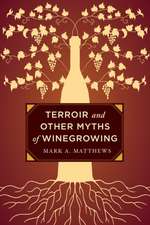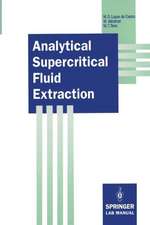Taste Chemistry
Autor R.S. Shallenbergeren Limba Engleză Hardback – 29 noi 1994
| Toate formatele și edițiile | Preț | Express |
|---|---|---|
| Paperback (1) | 955.56 lei 6-8 săpt. | |
| Springer Us – 20 sep 2012 | 955.56 lei 6-8 săpt. | |
| Hardback (1) | 962.98 lei 6-8 săpt. | |
| Springer Us – 29 noi 1994 | 962.98 lei 6-8 săpt. |
Preț: 962.98 lei
Preț vechi: 1174.36 lei
-18% Nou
Puncte Express: 1444
Preț estimativ în valută:
184.26€ • 192.39$ • 152.50£
184.26€ • 192.39$ • 152.50£
Carte tipărită la comandă
Livrare economică 05-19 aprilie
Preluare comenzi: 021 569.72.76
Specificații
ISBN-13: 9780751401509
ISBN-10: 0751401501
Pagini: 613
Ilustrații: XXIII, 613 p.
Dimensiuni: 140 x 216 x 40 mm
Greutate: 0.95 kg
Ediția:1993
Editura: Springer Us
Colecția Springer
Locul publicării:New York, NY, United States
ISBN-10: 0751401501
Pagini: 613
Ilustrații: XXIII, 613 p.
Dimensiuni: 140 x 216 x 40 mm
Greutate: 0.95 kg
Ediția:1993
Editura: Springer Us
Colecția Springer
Locul publicării:New York, NY, United States
Public țintă
ResearchDescriere
The object ofthis text is to examine, and elaborate on the meaning of the established premise that 'taste is a chemical sense.' In particular, the major effort is directed toward the degree to which chemical principles apply to phenomena associated with the inductive (recognition) phase of taste. A second objective is to describe the structure and properties of compounds with varying taste that allow decisions to be made with respect to the probable nature of the recognition chemistry for the different tastes, and the probable nature of the receptor(s) for those tastes. A final objective is to include appropriate interdisciplinary observations that have application to solving problems related to the chemical nature of taste. Taste is the most easily accessible chemical structure-biological activity relationship, and taste chemistry studies, i.e. the chemistry of sweetness, saltiness, sourness, and bitterness, have application to general biology, physiology, and pharmacology. Because it involves sensory perception, taste is also of interest to psychologists, and has application to the food and agricultural industries. The largest portion of the text is directed toward sweetness as, due to economic and other factors, the majority of the scientific studies are concerned with sweetness. The text begins with a prologue to describe the problems associated with the study of taste chemistry. Then, there is an introductory chapter to serve as an overview of the general interdisciplinary knowledge of the subject. It is followed by a chapter on the fundamental chemical principles that apply to taste induction chemistry.
Cuprins
Chemical Nature Of Taste. Taste Chemistry Principles. Water and Inorganic Compounds. Polyhydroxy Alcohols, Cyclitols, and Carbonyl Compounds. Structure, Reactions and Properties of Sugars. Sweetness and Other Taste Attributes of the Sugars. Amino Acids, Peptides and Proteins. Organic Compounds. The Common Saporous Units for Taste. The Initial Chemistry of Taste Symmetry, Chirality and Topology in Taste. The Taste Receptor(s). Index














